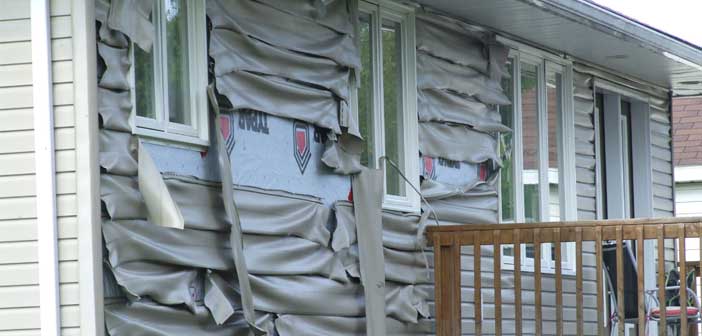SUDBURY—One of the most common questions heard amongst the crowds discussing the recent rash of fires on Manitoulin, and Little Current in particular, is “what is going to happen to our insurance rates?” According to Jim Smith, president of Cambrian Insurance, when it comes to insurance rates at least, we have more to fear from water than fire.
“Water is currently the biggest concern for the industry,” said Mr. Smith. “Nothing really compares to the losses currently being felt from water damage.”
Mr. Smith explained that insurance companies act much like a large pool of money where the premiums from policies cover losses, administration and profit for the insurance companies. “If the losses and other costs exceed the amount of money being collected from insurance policy premiums, then the rates have to go up for companies to stay in business,” he noted. That being said, there are a couple of elements that will tend to ameliorate premium increases.
“I wouldn’t think that premiums will change meaningfully because of these fires,” he said. “Insurance companies look at divisions. Northeastern Ontario would be one division, with a number of sub-divisions like Timmins, Sault Ste. Marie, North Bay and Sudbury, with the parts in between picked up by another division. Manitoulin is usually grouped in with Sudbury.”
Mr. Smith explained that rates are set according to “fairly simple math.”
Another mitigating factor on premiums is the fact that the losses are usually spread across a number of companies. “One building might be insured by Intact while another policy might be carried by Royal and so on,” he said. “No single company would usually be the insurer of all of the losses. That would be a very rare occurrence.”
Insurance companies monitor their exposure to any one region or block very closely, he noted. “They will look at how many policies they have in any one area,” he said. “In a city they will even look at how many policies they have on any single block.”
Not to say that insurance rates will not be going up, as serious floods across the nation have had a tremendous impact on the bottom lines of insurers. At the end of the day, insurance is something that helps spread the pain of the loss across so many policyholders that the pain becomes more bearable for every individual.
As to the fires in Little Current, most of the losses were insured, although some sources have indicated that the largest may not have been. The Expositor has not yet been able to determine for certain if the old curling club was insured by its owner.
“Normally, if it was, there would be someone like me going over the property by now,” suggested First General’s Rob Scott, who was taking pictures of the damage to the old Community of Christ Church (now Island Training Centre) on behalf of the insurers. The lack of an adjuster at the site of the old curling club suggests the loss for the property owner could well be a catastrophic writeoff.
As for the Island Training Centre, owner Michael Maciuk of Little Current was not hopeful. “Look at the roof,” he said, pointing to the sagging top of the structure. “I think it will be a write-off. How do you fix that?” Mr. Scott was not as certain that would be the case. “I am not an engineer,” he said, but he noted that his firm will have its work cut out for it in making the structure’s roof water tight.
Mr. Maciuk said the impact of the fire was particularly hard as he and his wife had tried to maintain the historical integrity of the structure. “That building had meaning for people,” he said. “There were a lot of memories there.”
High above the front entrance the old church bell still hangs, but Mr. Maciuk said he was concerned about how dangerous the damaged roof would make that artifact to those working below. Mr. Maciuk shook his head as he walked over to speak to the fire investigators outside his building. “It’s a shame.”
The Island Training Centre building also held two apartments, but there is no indication as to whether the tenants of those units had content insurance.



